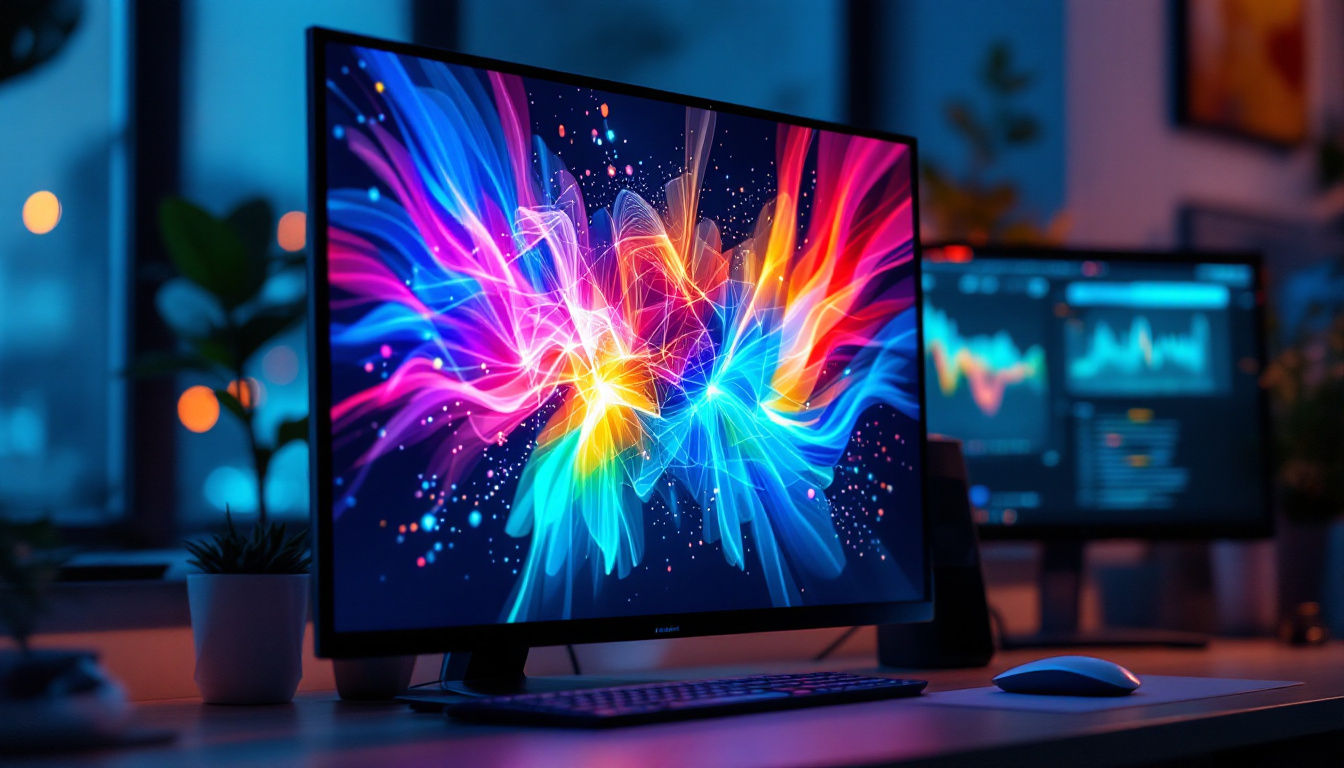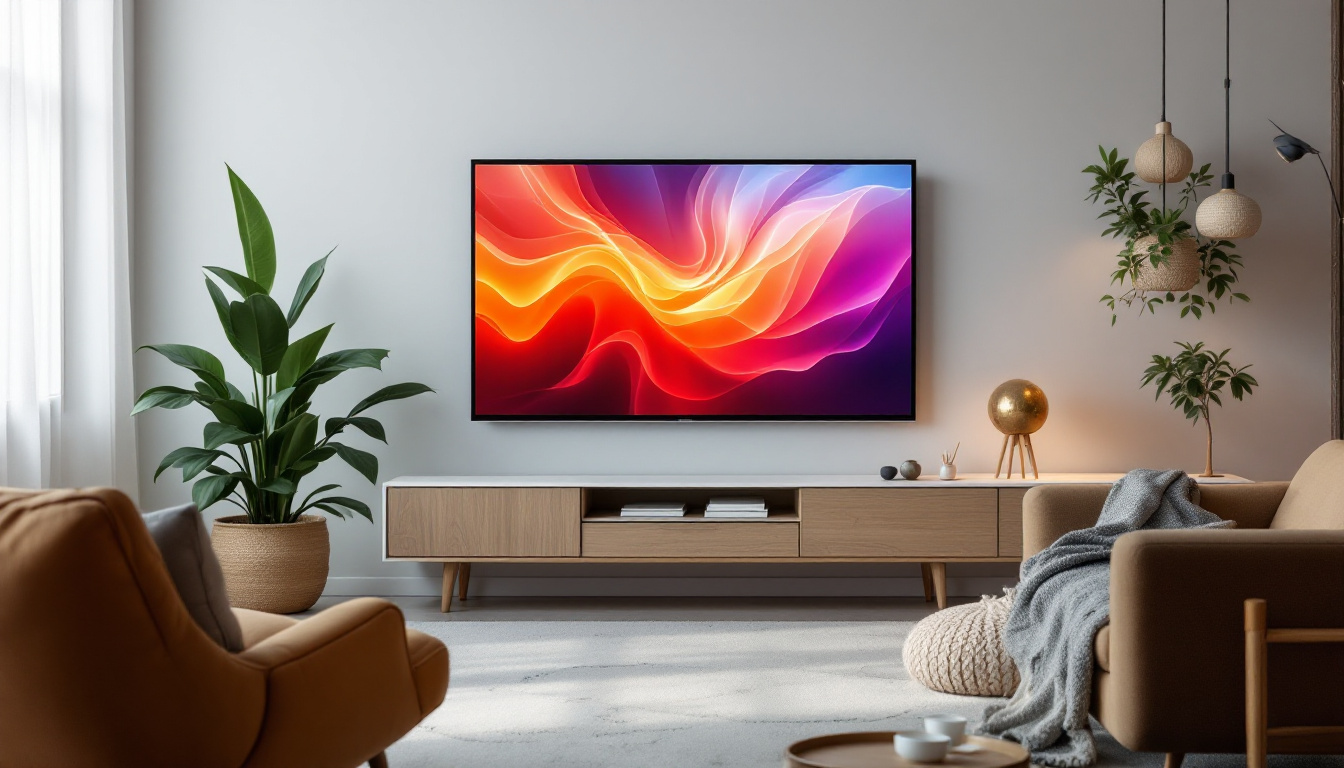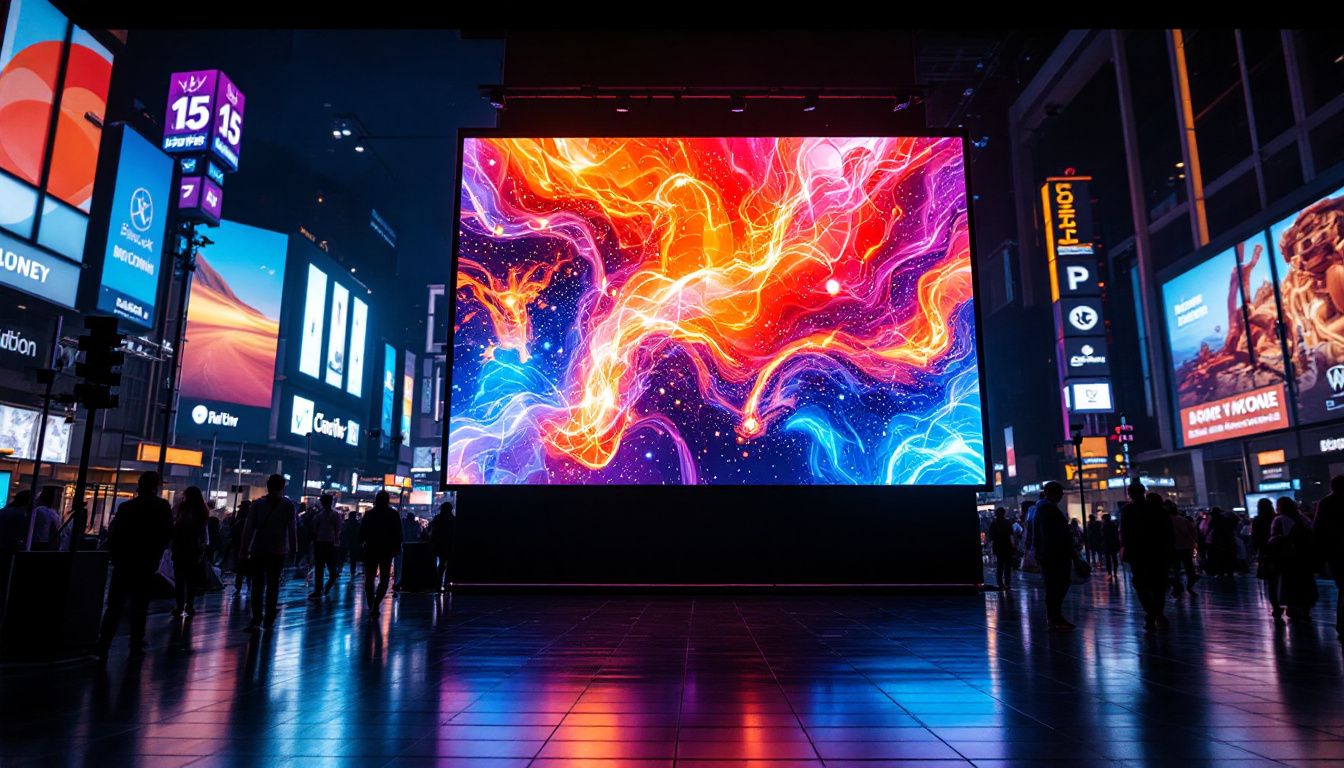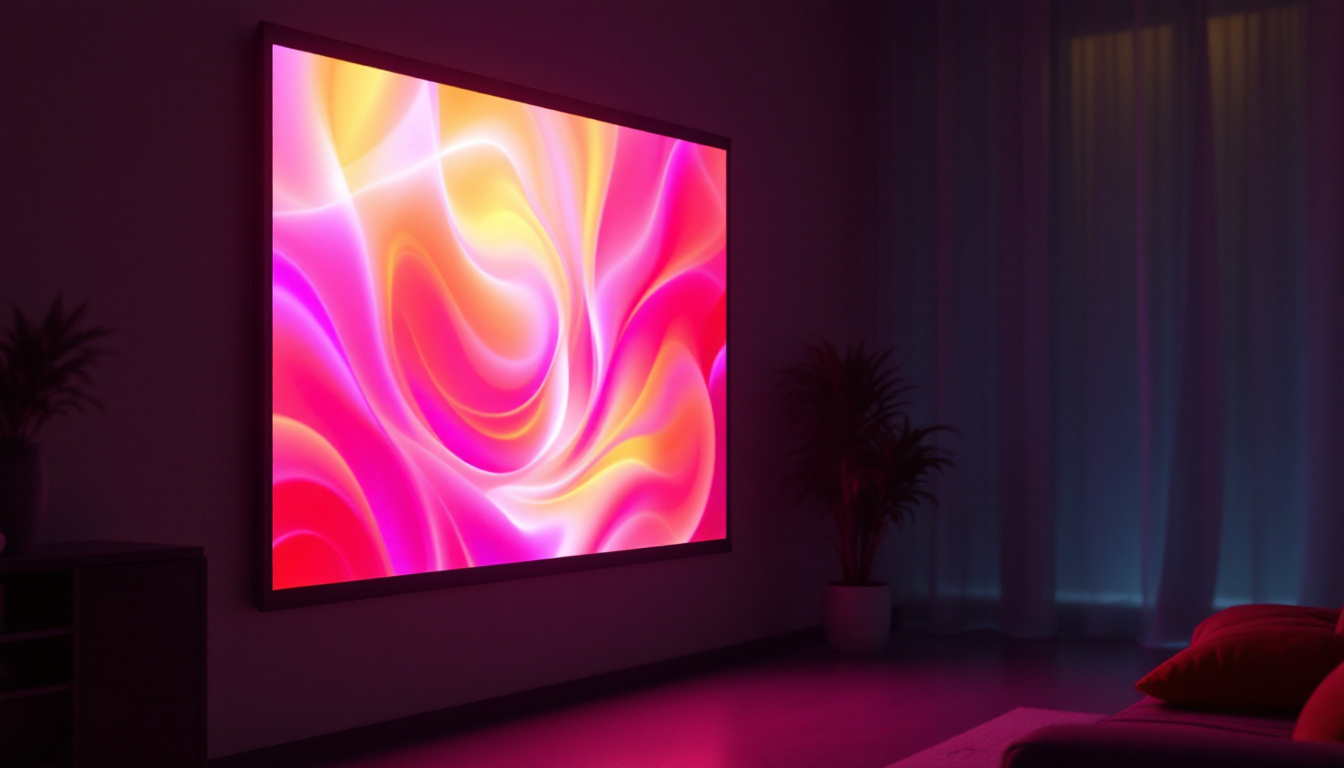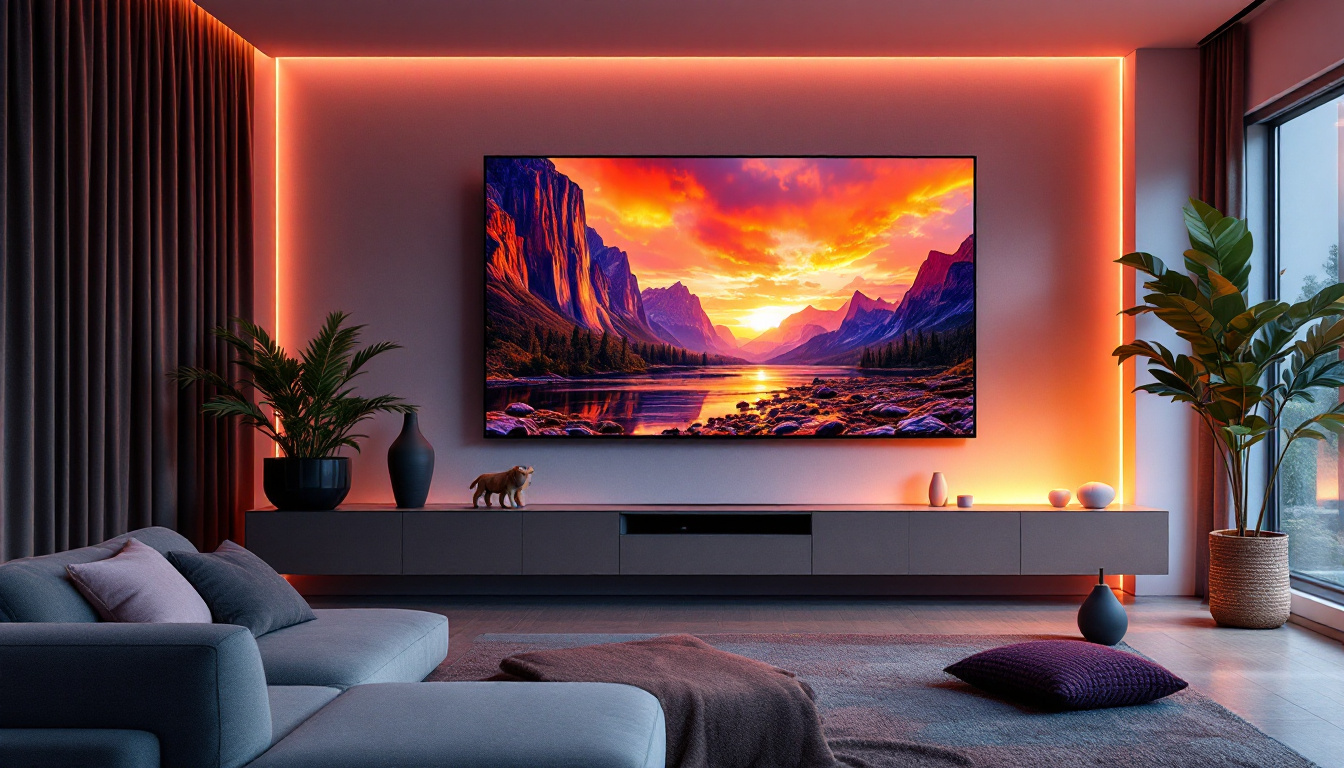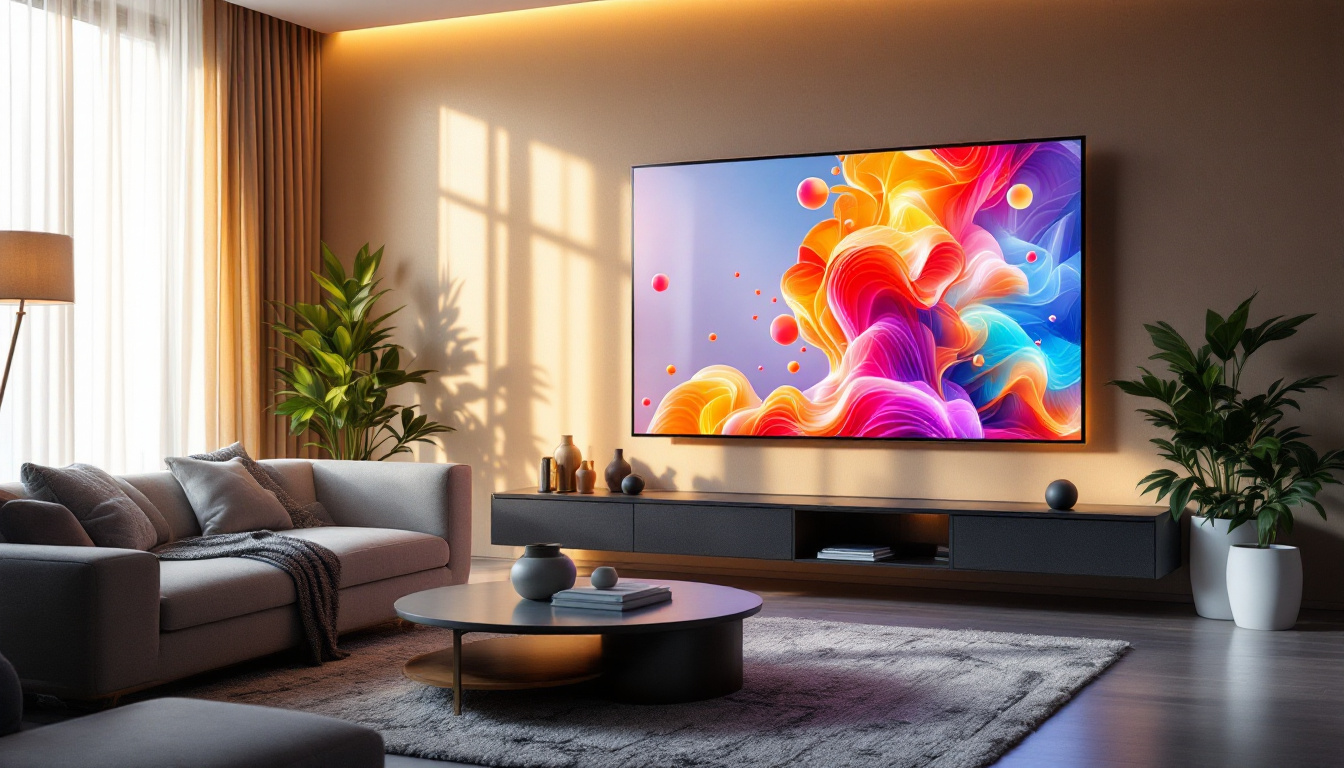50 Inch Plasma TV: LED Display Explained
The world of television technology has undergone significant transformations over the past few decades. Among the various types of displays, plasma and LED TVs have gained immense popularity, each offering unique advantages and disadvantages. This article delves into the specifics of a 50-inch plasma TV and how it compares to LED displays, providing insights into their functionalities, advantages, and considerations for potential buyers.
Understanding Plasma Technology
Plasma TVs utilize a technology that involves the use of small cells filled with gas, which, when electrified, produce images. This method allows for deeper blacks and more vibrant colors, making plasma displays particularly appealing for movie enthusiasts and gamers. The technology has its roots in the early 1960s but gained mainstream popularity in the early 2000s. As the technology evolved, manufacturers made significant strides in enhancing the performance and affordability of plasma displays, leading to a surge in their adoption in home theaters and entertainment systems. The immersive experience offered by plasma TVs has often been compared to that of a cinema, where the richness of color and detail can transform a simple movie night into a captivating visual journey.
How Plasma Displays Work
At the core of a plasma display are millions of tiny cells that contain a mixture of noble gases. When an electrical charge is applied, these gases become ionized, creating a plasma state. The resulting ultraviolet light then excites phosphor coatings on the cells, producing visible light. This process allows plasma TVs to achieve a high contrast ratio, which is crucial for delivering rich, detailed images. Additionally, the rapid response time of plasma technology means that fast-moving scenes in action films or sports broadcasts are rendered smoothly, minimizing motion blur and enhancing the overall viewing experience. This characteristic makes plasma displays particularly favored by those who appreciate high-octane visuals, as the technology can keep up with the most dynamic content.
Advantages of Plasma TVs
One of the standout features of plasma TVs is their ability to produce deep blacks. This quality stems from the technology’s capacity to turn off individual pixels completely, resulting in true black levels that enhance the overall viewing experience. Additionally, plasma screens generally offer wider viewing angles compared to LED displays, making them suitable for larger rooms where viewers may be seated at various angles. The color accuracy and consistency across different viewing positions mean that everyone in the room can enjoy the same high-quality image, regardless of where they are sitting. Furthermore, plasma TVs are known for their superior color depth, which allows for a more nuanced and lifelike representation of colors, making them a preferred choice for those who value visual fidelity in their media consumption.
Limitations of Plasma Technology
Despite their impressive image quality, plasma TVs come with certain drawbacks. They are typically heavier and bulkier than their LED counterparts, which can make installation more challenging. Moreover, plasma displays can suffer from burn-in, a phenomenon where static images persist on the screen if displayed for prolonged periods. This concern is particularly relevant for users who intend to watch news channels or play video games with static HUDs. Additionally, plasma TVs tend to consume more power than LED models, which can lead to higher energy bills over time. As technology has progressed, many consumers have opted for the slimmer, lighter, and more energy-efficient LED displays, which, while not always matching the color depth of plasma, offer a compelling alternative for everyday use. Despite these limitations, enthusiasts continue to appreciate plasma technology for its unique qualities, often seeking out older models as collector’s items or for dedicated home theater setups.
LED Display Technology Explained
LED (Light Emitting Diode) technology has revolutionized the television market, becoming the dominant choice for consumers. Unlike plasma, LED TVs use a backlighting system that illuminates the screen, allowing for thinner designs and improved energy efficiency. The evolution of LED technology has led to various subcategories, including OLED and QLED, each offering distinct features.
How LED Displays Work
LED TVs consist of an LCD (Liquid Crystal Display) panel illuminated by LED backlights. These backlights can be arranged in different configurations, such as edge-lit or full-array, which impacts the overall picture quality. In edge-lit models, LEDs are positioned along the edges of the screen, while full-array models feature a grid of LEDs behind the entire panel, allowing for better contrast and localized dimming.
Benefits of LED Displays
One of the primary advantages of LED technology is its energy efficiency. LED TVs consume significantly less power compared to plasma displays, making them a more environmentally friendly option. Additionally, they are generally lighter and slimmer, facilitating easier installation and placement in various settings. The longevity of LED displays is another notable benefit, as they typically have a longer lifespan than plasma TVs.
Drawbacks of LED Technology
While LED TVs offer numerous advantages, they are not without their shortcomings. One major drawback is the difficulty in achieving true black levels. Since LED displays rely on backlighting, even the best models may struggle to produce the same depth of black as plasma TVs. Additionally, viewing angles can be limited, with color and contrast degrading when viewed from the side.
Comparing 50 Inch Plasma and LED TVs
When considering a 50-inch television, the choice between plasma and LED technology often comes down to personal preferences and viewing habits. Each type of display has its strengths and weaknesses, which can significantly influence the overall viewing experience.
Picture Quality
In terms of picture quality, plasma TVs generally excel in producing rich colors and deep blacks, making them ideal for dark room environments. This quality is particularly beneficial for watching movies or playing video games where contrast plays a crucial role. On the other hand, LED TVs can provide brighter images, which may be advantageous in well-lit rooms. However, the inability of LED displays to achieve true blacks can be a significant drawback for some users.
Viewing Angles
For those who frequently gather with friends or family to watch TV, viewing angles are an important consideration. Plasma TVs shine in this area, offering consistent color and brightness from wide angles. Conversely, LED TVs can exhibit color shifting and reduced brightness when viewed from the side, which may detract from the viewing experience in larger groups.
Energy Efficiency and Longevity
Energy efficiency is another critical factor to consider. LED TVs consume less power than plasma displays, making them a more economical choice in the long run. Furthermore, LED technology typically boasts a longer lifespan, reducing the need for replacements. For consumers who prioritize sustainability and cost-effectiveness, LED displays may be the more appealing option.
Choosing the Right Display for Your Needs
Deciding between a 50-inch plasma TV and an LED display involves evaluating individual needs and preferences. Factors such as viewing environment, content type, and budget play significant roles in this decision-making process.
Viewing Environment
The environment in which the TV will be placed is crucial. For dimly lit rooms, a plasma TV may provide a superior viewing experience due to its ability to produce deep blacks and vibrant colors. However, if the TV will be used in a bright room, an LED TV may be more suitable due to its higher brightness levels and energy efficiency.
Content Type
Consideration of the type of content that will be viewed is also essential. For users who primarily watch movies and enjoy immersive gaming experiences, the superior picture quality of plasma displays may be more appealing. Conversely, those who watch a mix of live television, sports, and streaming content may find the versatility of LED TVs to be more advantageous.
Budget Considerations
Budget constraints can also influence the decision. Plasma TVs, while often offering excellent picture quality, may come at a higher initial cost and may require more frequent replacements. LED TVs, on the other hand, provide a range of options across various price points, making them accessible for a wider audience.
Future of Television Technology
The television industry is continuously evolving, with new technologies emerging that promise to enhance the viewing experience further. As consumers become more discerning, manufacturers are investing in innovations that blend the best features of both plasma and LED technologies.
Emerging Technologies
Recent advancements include OLED (Organic Light Emitting Diode) and QLED (Quantum Dot Light Emitting Diode) technologies, which aim to combine the benefits of both plasma and LED displays. OLED technology, for instance, offers true blacks and vibrant colors while maintaining energy efficiency. Meanwhile, QLED enhances brightness and color accuracy, making it a formidable competitor in the market.
Consumer Preferences
As technology progresses, consumer preferences will likely shape the future of television displays. Factors such as price, energy efficiency, and picture quality will continue to drive purchasing decisions. As a result, manufacturers will need to adapt and innovate to meet the evolving demands of the market.
Conclusion
In conclusion, the choice between a 50-inch plasma TV and an LED display ultimately depends on individual preferences and viewing habits. Plasma TVs offer unparalleled picture quality and viewing angles, making them ideal for movie lovers and gamers. On the other hand, LED TVs provide energy efficiency, a slim design, and a broader range of options, appealing to a wider audience. As technology continues to advance, consumers can expect even more exciting developments in the world of television displays.
Discover the Future of Visual Experience with LumenMatrix
As you consider the vast landscape of television technology for your home or business, LumenMatrix stands at the forefront of LED innovation, ready to elevate your viewing experience. With a comprehensive range of solutions including Indoor and Outdoor LED Wall Displays, Vehicle LED Displays, and more, LumenMatrix is committed to transforming your visual communication and entertainment needs. Embrace the cutting-edge advancements in LED display modules and join the revolution in creating immersive environments. Check out LumenMatrix LED Display Solutions today and step into the future of dynamic and engaging visual displays.


